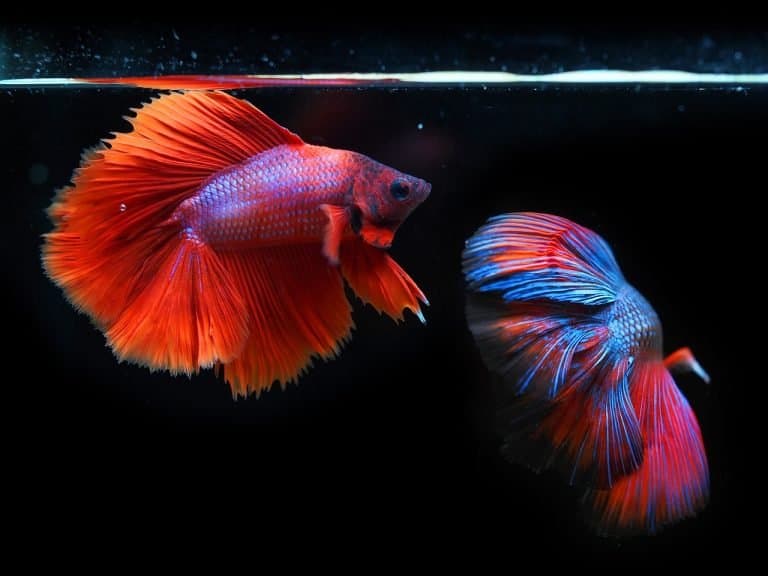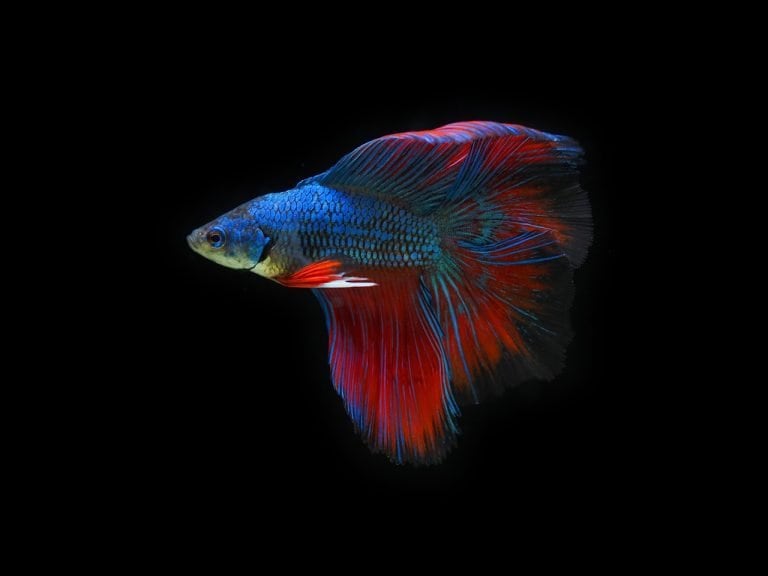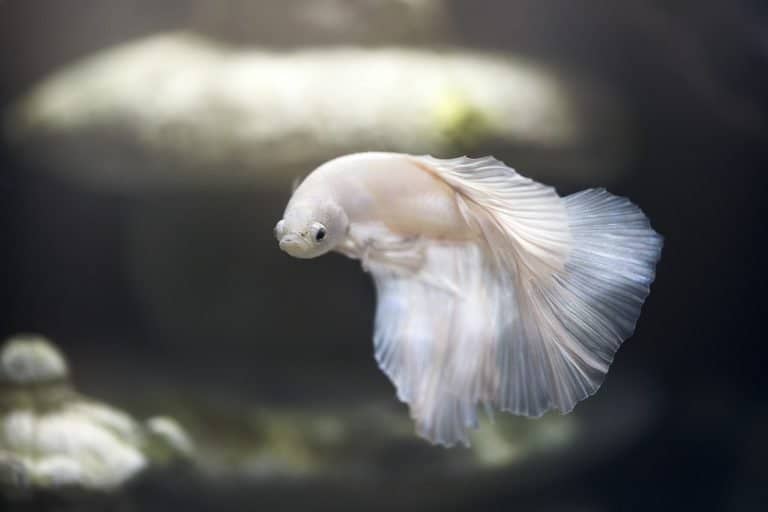The resplendent betta fish, known for its vibrant colors and flamboyant fins, is a captivating subject for enthusiasts. Beyond the aesthetic allure, the dynamic coloration of these creatures offers a window into their emotional states and physiological well-being.
A meticulous observer can discern the subtle shifts in shades that signal changes in mood, stress levels, and health. Understanding these chromatic clues not only enhances the keeper’s ability to provide optimal care but also fosters a deeper connection with the living artistry that bettas represent.
In exploring the mysteries of betta fish colors, we affirm our commitment to autonomy, allowing these aquatic individuals the freedom to thrive in an environment responsive to their silent communication.
Key Takeaways
- Betta fish exhibit color changes that signify mood, stress, and health.
- Certain hues intensify or diminish based on their moods.
- Fading colors in Betta fish indicate stress or fear.
- Vivid and bright colors indicate a Betta fish’s contentment and good health.
Decoding Betta Color Changes
Betta fish exhibit a range of color changes that can signify alterations in mood, environmental stress, or health status. These chromatic shifts are not merely aesthetic phenomena but are deeply rooted in the principles of color genetics.
The expression of pigments in Betta fish is influenced by genetic codes, which can undergo modifications due to various internal and external factors. Tank lighting plays a pivotal role in this context, as it can either accentuate or obscure the vibrant hues of Betta fish, affecting the perception of their coloration.
An analytical examination of these changes requires a precise understanding of the genetic blueprint responsible for coloration, as well as the impact of the photic environment on pigment expression and visibility.
Mood Reflections in Hues
The correlation between Betta fish coloration and their emotional states is a fascinating aspect of their behavioral ecology, with certain hues intensifying or diminishing in response to their moods. This interplay of color psychology and hue significance can be quantified and analyzed to provide insights into the wellbeing of these aquatic creatures.
| Mood State | Color Intensity Change | Hue Significance |
|---|---|---|
| Aggression | Increase | Enhanced vibrancy |
| Stress/Fear | Decrease | Dullness, fading |
| Mating Readiness | Increase | Brightening |
| Dominance Display | Increase | Intense coloration |
| Illness/Discomfort | Decrease | Pale or irregular |
Through methodical observation, one can discern patterns in the chromatic shifts of Betta fish, thereby enabling owners to make informed decisions about their care. Understanding these mood-driven color variations is pivotal for ensuring the freedom and health of Betta fish in captivity.
Stress Signals Through Color
Observing a Betta fish’s color fade can be a clear indication of stress or fear, signaling to owners that their aquatic pet may require immediate attention to its environment or health. This color fading is often accompanied by a lack of vibrancy and can serve as an early warning system for the aquarist.
Similarly, darkening scales may not merely reflect a Betta’s natural coloration but rather an adaptive response to stressors. In such instances, the darkening is typically uniform, contrasting sharply with the brighter, stress-free patterns. Precise observation and interpretation of these color changes are crucial for the proactive maintenance of the Betta’s well-being.
Addressing water quality, tank conditions, and potential stress factors promptly can mitigate these signs and restore the Betta to its full chromatic brilliance.
Happiness and Vibrant Shades
Transitioning from stress indicators, displaying a spectrum of vivid and bright colors is often a manifestation of a Betta fish’s contentment and good health. Analyzing these vibrant shades through the lens of color genetics reveals a complex interplay of genetic factors that determine a Betta’s potential coloration. Environmental factors, particularly diet influence, can either enhance or diminish the genetic expression of pigmentation, thus reflecting a Betta’s well-being.
| Factor Influencing Color | Details |
|---|---|
| Genetic Makeup | Determines the base color possibilities and patterns. |
| Diet Influence | Nutrient-rich diets can intensify color vibrancy. |
| Environmental Conditions | Optimal water quality ensures color genes are fully expressed. |
| Health Status | A healthy Betta will display brighter, more saturated colors. |
In the pursuit of maintaining Betta fish freedom in expression of their natural beauty, providing a conducive environment and a balanced diet is pivotal.
Health Warnings and Pigmentation
While a Betta fish’s striking coloration can signify health and vitality, certain changes in pigmentation may serve as critical warnings of underlying health issues. The interplay between pigment genetics and disease diagnostics is complex; however, by observing color alterations, aquarists can intervene promptly to address potential ailments.
It’s imperative that enthusiasts comprehend the implications of such variations:
- Fading colors may indicate stress, poor diet, or systemic illness.
- Darkening or blackening of colors could suggest a fungal or bacterial infection.
- Abrupt color loss, particularly in patches, often signals parasitic attacks or advanced disease stages.
- Whitish film or spots can be symptomatic of ich, a common and highly contagious parasitic disease.
An analytical approach to color change, grounded in the principles of pigment genetics, enhances disease diagnostics, granting Betta owners the freedom to safeguard their pet’s wellbeing.





